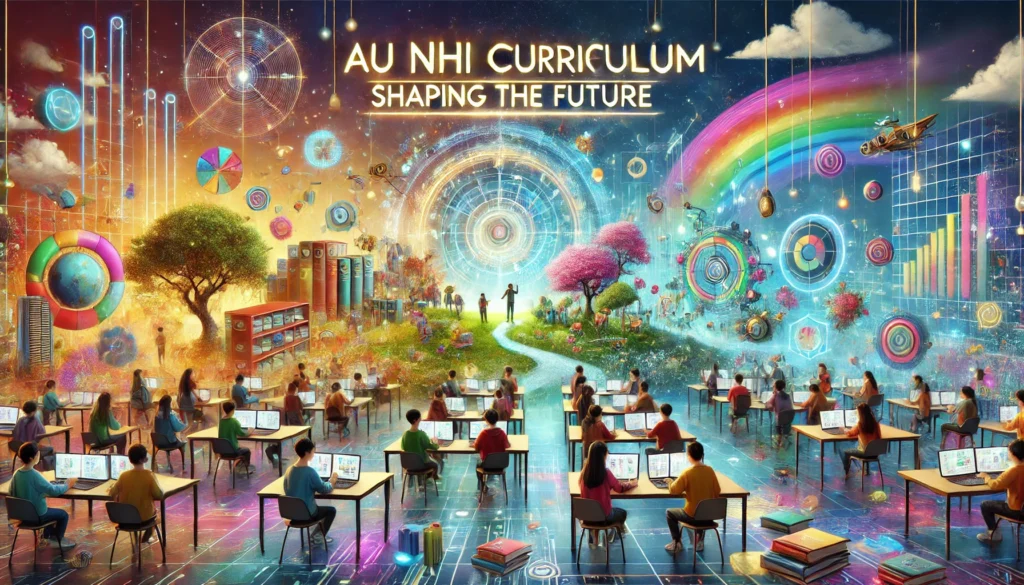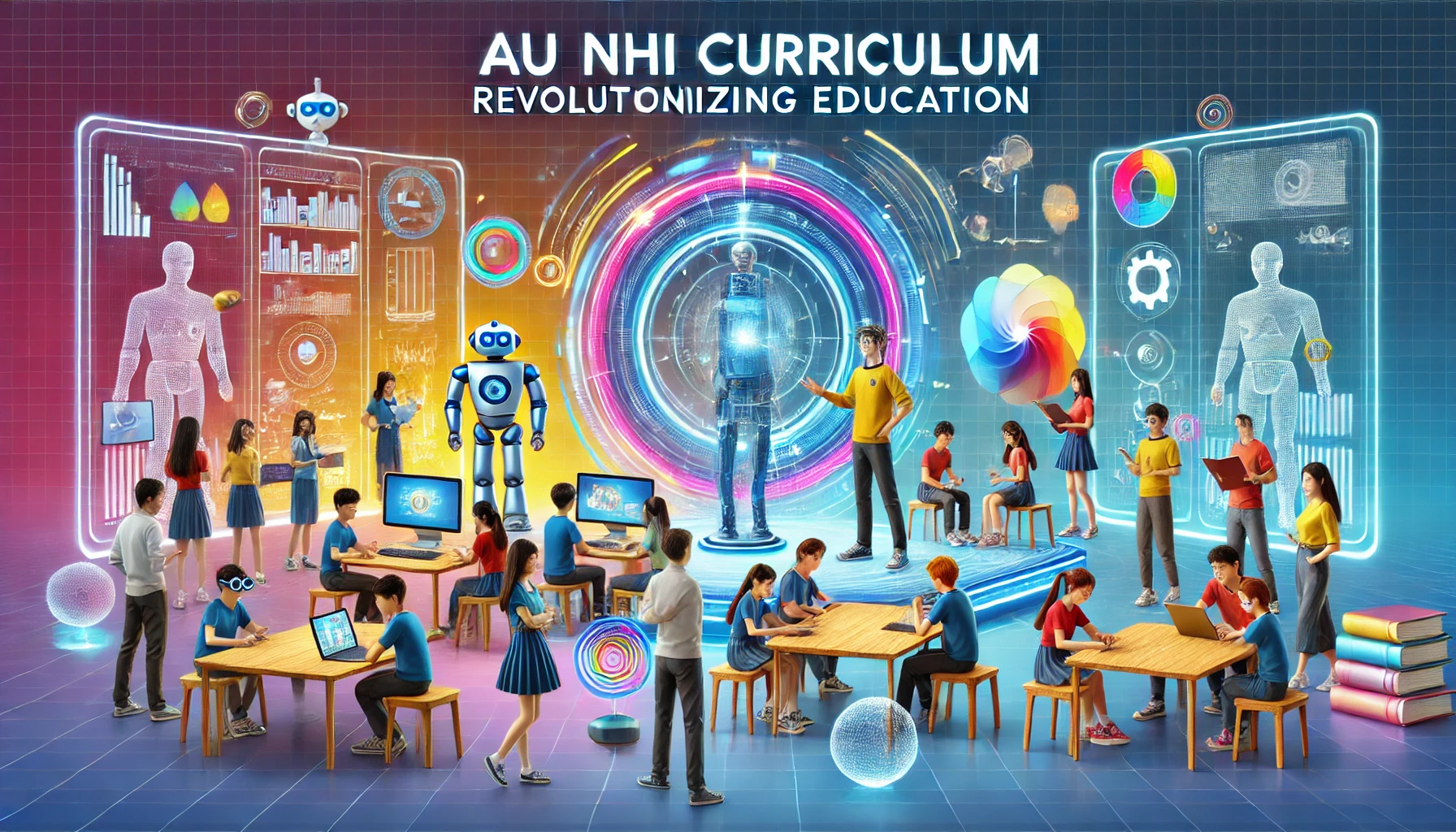Introduction
Education has always been the cornerstone of societal progress, evolving to meet the needs of each generation. The AU NHI Curriculum represents a revolutionary shift in how knowledge is imparted, emphasizing personalized learning, technological integration, and real-world applications. Designed to foster adaptability and innovation, this curriculum is set to redefine the educational landscape, preparing students for a rapidly changing future.
This guide delves deep into the AU NHI Curriculum, exploring its objectives, unique pillars, challenges, and potential impact on global education.
1. What is the AU NHI Curriculum?
The AU NHI Curriculum is an innovative educational framework designed to address the shortcomings of traditional learning systems. Originating from a forward-thinking collaboration of educators, policymakers, and tech experts, its core mission is to equip students with the skills and knowledge necessary for a dynamic world.
Core Objectives:
- Foster lifelong learning habits.
- Bridge the gap between academic knowledge and practical application.
- Create inclusive and accessible education for all.
By focusing on holistic development, the AU NHI Curriculum emphasizes critical thinking, creativity, emotional intelligence, and adaptability, which are crucial for success in the modern era.
2. Pillars of the AU NHI Curriculum

2.1 Student-Centered Learning
One of the defining features of the AU NHI Curriculum is its student-centric approach. Unlike traditional models where a one-size-fits-all methodology prevails, this curriculum tailors education to individual needs.
- Personalized Learning Plans: Students follow customized paths based on their strengths, interests, and goals.
- Adaptive Technologies: AI-driven tools assess students’ progress and adjust learning materials accordingly.
- Interactive Learning: Classes are designed to be more engaging, encouraging collaboration and participation.
2.2 Integration of Technology
Technology plays a central role in the AU NHI Curriculum, transforming classrooms into hubs of innovation.
- Digital Platforms: Interactive apps and online portals facilitate seamless learning experiences.
- Virtual Classrooms: Geographical barriers are eliminated, allowing students to learn from anywhere in the world.
- AI Assistance: AI-powered tutors provide instant feedback, enhancing the learning experience.
2.3 Holistic Development
The curriculum goes beyond academics, focusing on nurturing well-rounded individuals.
- Emotional Intelligence: Lessons incorporate activities that enhance empathy, self-awareness, and interpersonal skills.
- Critical Thinking: Problem-solving exercises challenge students to think creatively and independently.
- Physical and Mental Health: Regular wellness programs are integrated to promote balanced lifestyles.
2.4 Real-World Applications
Preparing students for the real world is a core goal of the AU NHI Curriculum.
- Project-Based Learning: Students work on real-life problems, gaining hands-on experience.
- Internship Opportunities: Partnerships with industries enable students to explore careers early.
- Skill Development: Emphasis on communication, teamwork, and leadership ensures students are job-ready.
3. Benefits of the AU NHI Curriculum

The AU NHI Curriculum offers numerous advantages for students, educators, and society at large.
1. Independent Learning:
Students develop the ability to learn independently, fostering lifelong curiosity and adaptability.
2. Job Market Readiness:
With a focus on practical skills and industry exposure, students are better prepared for the workforce.
3. Bridging Education Gaps:
By integrating technology and personalized learning, the curriculum ensures inclusivity and accessibility.
4. Global Competence:
Students gain the skills needed to thrive in a globalized world, such as cultural awareness and digital fluency.
4. Challenges and Solutions
While the AU NHI Curriculum offers transformative benefits, its implementation is not without challenges.
4.1 Accessibility Issues
Not all students have access to the necessary technology and resources.
Solution:
- Partnering with governments and NGOs to provide devices and internet connectivity.
- Creating offline learning options for remote areas.
4.2 Resistance to Change
Educators and parents may hesitate to adopt a new system.
Solution:
- Conducting workshops and training programs to familiarize stakeholders with the curriculum.
- Demonstrating the tangible benefits through pilot programs and success stories.
5. Success Stories and Case Studies
Example 1: Transforming Rural Education
In a small rural community, the AU NHI Curriculum was introduced to bridge the digital divide. Within a year, students showed a 40% improvement in critical thinking and problem-solving skills.
Example 2: Enhancing Urban Learning Environments
An urban school integrated the curriculum with state-of-the-art technology. Students collaborated on projects with peers worldwide, broadening their perspectives and boosting innovation.
6. Future Prospects
The AU NHI Curriculum is poised to become a global benchmark for education.
6.1 Emerging Technologies
- AI-Driven Analysis: Advanced analytics predict students’ learning patterns, offering tailored guidance.
- IoT in Classrooms: Connected devices create interactive and immersive learning experiences.
- Blockchain for Records: Securely storing student data to ensure privacy and accessibility.
6.2 Global Adaptability
The curriculum’s flexible design allows it to be customized for diverse cultural and educational contexts, making it a universal solution.
6.3 Industry Partnerships
By collaborating with industries, the AU NHI Curriculum ensures students are prepared for future jobs that don’t yet exist.
7. Maximizing the Benefits of the AU NHI Curriculum
To fully harness its potential, students, educators, and parents should:
- Regularly update learning data and metrics.
- Actively engage in collaborative projects.
- Set clear goals and track progress.
- Embrace preventive education and well-being practices.
Conclusion
The AU NHI Curriculum represents a paradigm shift in education, prioritizing adaptability, innovation, and holistic development. By addressing the gaps in traditional systems, it equips students with the tools to thrive in a complex, fast-paced world. As we embrace this revolutionary approach, the future of education looks brighter than ever.
FAQs
1. What does AU NHI stand for?
AU NHI refers to a forward-thinking curriculum framework aimed at revolutionizing modern education.
2. Who can benefit from the AU NHI Curriculum?
Students, educators, and institutions worldwide can benefit from its personalized, technology-driven approach.
3. Is the AU NHI Curriculum suitable for all ages?
Yes, it is designed to be adaptable, catering to learners of all ages and stages.
4. How does technology enhance the curriculum?
Technology enables real-time feedback, adaptive learning, and global connectivity, enriching the overall educational experience.
5. How is the AU NHI Curriculum different from traditional systems?
Unlike traditional models, it focuses on personalized learning, real-world applications, and holistic development, ensuring students are prepared for the future.



